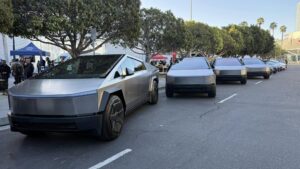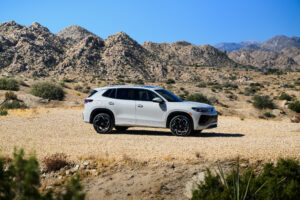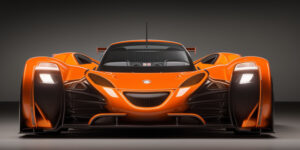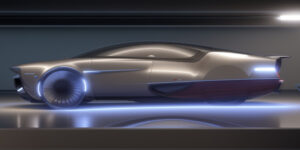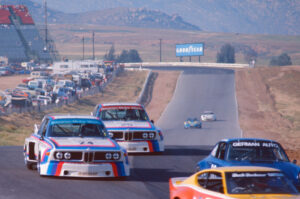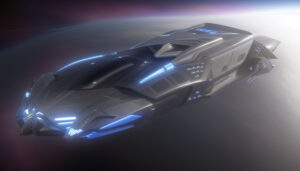2013 Volkswagen Beetle Convertible
[singlepic id=14332 w=640 h=480 float=center]
Photos by Cor Steenstra
The latest Beetle has been an instant success for Volkswagen since it went on sale in September 2011 as a 2012 model. And that success will continue with the introduction of the Beetle Convertible, the sportiest and most dynamic version of the iconic softtop seen so far.
Ever since the type 15 Convertible from 1949, the Beetle has been one of the most popular open-top cars built. More than 330,000 examples of the first Beetle Convertible were manufactured over a 32-year span, while another 234,619 New Beetle Convertibles were produced in an eight-year period.
The New Beetle Convertible was not a straight copy of the original, but a reinterpretation and development of it. And that’s the case with the third-generation Beetle Convertible. Klaus Bischoff, Head Designer, Volkswagen Brand says: “Retro is not our thing: we are always looking forward. Volkswagen has reinterpreted the Beetle Convertible’s timeless design with a sportier and more dynamic silhouette, just as it did with the Beetle Coupe. The car is substantially wider, has a longer hood, and has a more upright windshield that sits further back than before. The standard rear spoiler reinforces the car’s sporty look.â€
At launch, there will be three special edition Beetle Convertibles that evoke three distinct decades in American cultural history—the 1950s, the 1960s, and the 1970s. The ‘50s Edition Beetle Convertible is classic and classy in black with a tan interior. The ‘60s Edition has groovy two-tone seats and Denim Blue paint that gives a nod to blue jeans, the most ubiquitous fashion statement of the era. And the ‘70s Edition Convertible harks back to the more sophisticated side of the decade with a Toffee Brown exterior and chrome-look disc wheels.
Exterior
The Beetle Convertible retains the bold, purposeful stance of the Coupe, thanks to wider tracks and a longer wheelbase than the previous New Beetle Convertible. Compared with the 2006 version of the older car, the latest Beetle Convertible is 3.3 inches wider at 71.2 inches; 1.1 inches lower at 58.0 inches tall; and 6.0 inches longer at 168.4 inches overall.
A convertible bodyshell is less rigid than a coupe’s because the upper part of the structure is open, so the Beetle Convertible’s body needed reinforcements. This included the use of partial body reinforcements and sheetmetal with greater strength such as:
• The A-pillar’s interior bar is 0.5 mm thicker and made from ultra-high-strength hot-formed steel instead of cold-formed metal. There is also a reinforcement in the “bend areaâ€
• The front roof crossmember has an additional central plate
• Additional tubing made of ultra-high-strength (hot formed) steel between the B-pillars as well as a stronger heel plate
• More sheetmetal in the lower body sidemembers
• An extra rear panel that integrates the Automatic Rollover Support System is made of high-strength steel
Due to the targeted use of materials and laser welding of selected parts, the body stiffness was increased by 20 percent over that of the New Beetle Convertible: the torsional rigidity is now 17.8 Hz.
Top up, the Beetle Convertible has an even lower roofline than the Coupe’s. The top lies flat when it’s lowered, giving good visibility: the flexible leatherette top boot tidies up the appearance and is also a nice retro touch. Volkswagen decided to stick with a traditional softtop because it allows for a roofline that’s more like the original 1949 type 15’s. Also, a softtop takes up less space than a folding hardtop, thus giving more trunk space. The heatable rear window is made of tempered safety glass.
The softtop’s outer shell itself is made from three layers: an outer one of polyacrylic woven fabric; a middle layer of synthetic rubber; and an inner lining of polyester. Underneath, there’s a three-layer design for the insulation, made from polyester nonwoven fabric, polyethylene terephthalate (PET) insulating fleece, and polyester spunboard. The headliner is made from foam-laminated fabric. The result is a snug top that yields remarkably low levels of wind noise.
The top is powered by two electric motors and latches and unlatches automatically at the touch of a button, which is located on the upper rail of the windshield surround. The top takes just 9.5 seconds to stow and 11.0 seconds to be raised: the difference is in the time it takes to latch the roof’s header to the windshield. The top can be raised and lowered at speeds of up to 31 mph, unusually high for a convertible.
Pressing and holding the button opens the top, while pulling and holding closes it. The side windows automatically drop when the top is opened and are raised when it closes. There is an indicator light located in the instrument panel. Trunk space remains the same whether the top is open or closed.
An integrated wind blocking system is available on the Beetle Convertible as a Volkswagen Genuine Accessory. It is housed in the trunk under the convertible top area and can be safely and neatly stowed when folded and not in use. The storage compartment for the wind blocker is designed to allow full use of the trunk area.
Interior
The Beetle Convertible’s interior styling, ergonomics and quality build off the themes that were introduced with the Coupe. Klaus Bischoff says: “The shape and use of color for the dashboard harkens back to the design of the very first Beetle models and helps to create a highly individual cabin. The simple layout and clean graphics are the same as the Beetle Coupe’s, which has been a success with consumers and critics alike.â€
Three round gauges are arranged in front of the driver (tachometer, speedometer, fuel gauge), providing all key information at a glance. A multifunction display is integrated in the speedometer, which is housed in the central position in the binnacle. The steering wheel is specially designed with colored accents in the spokes depending on the equipment line.
Framed by two air vents, the audio/navigation system is optimally located in the driver’s field of vision on the dashboard. Within easy reach, the climate controls are situated just below. Similar to the original Beetle, the new car has an extra glovebox integrated into the dashboard—the kaeferfach or “Beetle binâ€. The lid folds upward, while the standard glovebox opens downward. Another classic feature is the auxiliary instrumentation package located above the audio/navigation system that consists of an oil temperature gauge, a sport chronometer, and a boost pressure gauge. This is standard on the Turbo and TDI Clean Diesel models.
All 2013 Beetle Convertibles are exceptionally well equipped. The base 2.5-liter model has standard 17-inch aluminum-alloy wheels; a leather-wrapped steering wheel; an eight-speaker sound system with aux-in; Bluetooth® technology; a Media Device Interface with iPod® cable; three-color adjustable ambient lighting; heatable front seats and exterior mirrors; cruise control; and V-Tex leatherette seating.
Available features include a multifunction leather-trimmed steering wheel, Keyless access with push-button start, leather seating, the RNS® 315 navigation system, the award-winning Fender® Premium Audio System, and Sirius XM® Satellite Radio.
Even though the latest Beetle Convertible has a sleeker and sportier roofline than the New Beetle Convertible, front and rear passenger headroom remains plentiful. The longer roof section results in 0.5 inches more rear-seat headroom. Front legroom is improved, too, by 1.6 inches, and front shoulder room grows by 2.5 inches. Overall, the interior volume has increased from 78 to 81.4 cubic feet.
The trunk is larger, offering 7.1 cubic feet of space, compared with the New Beetle’s 5.0 cubic feet. A split-folding rear seat—new on this Beetle—allows the car to carry bulkier and larger items than is normal with a convertible.
Engines and Transmissions
The 2013 Beetle Convertible offers the following powertrain combinations: the 2.5-liter five-cylinder engine mated to a six-speed automatic transmission; the 2.0-liter TSI turbocharged four-cylinder gasoline engine with six-speed manual or six-speed DSG® dual-clutch automatic transmissions; and the 2.0-liter TDI turbocharged Clean Diesel with the same manual or DSG options.
The 2.5-liter inline five-cylinder has dual chain-driven overhead camshafts with variable timing on the intake side, four valves per cylinder, and an aluminum-alloy cylinder head. The engine makes 170 horsepower and 177 pound-feet of torque. The EPA estimated fuel economy rating is 21 mpg city and 27 mpg highway.
The turbocharged dual-overhead-cam, 16-valve, 2.0-liter, direct-injection, four-cylinder engine in the Turbo makes 200 horsepower and 207 lb-ft of torque, delivered from just 1700 rpm. With the DSG transmission, the Turbo gets EPA-estimated fuel economy of 21 mpg city and 29 mpg highway; for the Turbo with the six-speed manual, the figures are 21 mpg city and 30 mpg highway.
The Beetle TDI uses the company’s 2.0-liter turbocharged, direct-injection Clean Diesel engine that makes 140 horsepower and 236 pound-feet of torque. The car has an EPA estimated fuel economy rating of 28 mpg city and 41 mpg highway when equipped with the manual transmission, making it the most economical convertible on the highway today.
Dual-clutch transmission advantages: DSG combines the comfort and ease-of-use of an automatic with the responsiveness and economy of a manual. The six-speed, transversely-mounted DSG unit features two wet clutches with hydraulic pressure regulation. One clutch controls the “odd†gears—first, third, fifth and reverse—while the other operates the even gears. Essentially it is two gearboxes in one.
With DSG, the set-up allows the next-higher gear to be engaged but remain on standby until it is actually selected. In other words, if the Beetle is being driven in third gear, fourth is selected but not yet activated. As soon as the ideal shift point is reached, the clutch on the third-gear side opens, the other clutch closes and fourth gear engages under accurate electronic supervision.
Since the opening and closing actions of the two clutches overlap, a smooth gearshift results and the entire shift process is completed in less than four-hundredths of a second. In addition to its fully automatic shift mode, DSG has a Tiptronic® function to permit manual gear selection.
Suspension
All Beetle Convertible models are fitted with a strut-type front suspension with lower control arms and an anti-roll bar: on the Turbo’s sport suspension, the bar’s diameter is increased from 22 mm to 23 mm. At the back, all models get a multi-link independent rear suspension with coil springs, telescopic dampers, and an 18-mm-diameter anti-roll bar.
All Beetle Convertibles have standard anti-lock brakes (ABS) with electronic brake pressure distribution (EBD). The Convertible and TDI Convertible have 11.3-inch-diameter vented front discs and 10.7-inch-diameter solid rear disc brakes. The Turbo has larger 12.3-inch-diameter vented front discs, with red calipers.
To help ensure that power is applied properly in challenging conditions, the Turbo model features the XDS® cross differential (limited-slip) system that electronically monitors input from various wheel sensors and, in the event of slippage, transfers extra torque to the wheel or wheels with the most traction.
Safety and Security
The starting point in the Beetle Convertible’s safety armory is a very rigid body structure that uses seamless laser welds and ultra-high-strength hot-formed steels in the crash-load paths. In a convertible, it’s important to have protection in the event of a rollover accident, which Volkswagen has addressed with a reinforced front roof crossmember, strengthened A-pillar, and the Automatic Rollover Support System. Two roll-over bars are concealed behind the rear bench seat-back, activated by the computer that deploys the airbags in the case of a crash. Along with the fixed A-pillars, they help to provide effective protection for the occupants of all four seats within milliseconds. Front and head-thorax airbags are also among the standard equipment.
The Beetle Convertible includes Volkswagen’s advanced Intelligent Crash Response System that shuts off the fuel pump, unlocks the doors, and switches on the hazard lights if the car is involved in certain types of collision.
The Beetle Convertible is also covered under the no-charge Carefree Maintenance Program. All scheduled maintenance is covered for the length of the New Vehicle Warranty—three years or 36,000 miles, whichever occurs first. Additionally, all current Volkswagen vehicles use synthetic oil, which, when combined with state-of-the-art German engineering, eliminates the need for a 5000-mile oil change, and allows owners to go farther between scheduled oil changes.
Model Line-up
Beetle Convertible
The Beetle Convertible, which has a starting MSRP of $24,995, comes standard with: six-speed automatic transmission; leather-wrapped steering wheel; manual air conditioning; Media Device Interface (MDI) with iPod adapter; three-color adjustable ambient lighting; Bluetooth technology; heated front seats; V-Tex leatherette seating surfaces; 17-inch aluminum-alloy wheels; eight-speaker sound system with aux-in; cruise control; and power adjustable, heatable side mirrors. The ‘50s Edition adds leather seating surfaces, chrome exterior mirror caps, and “Heritage†wheels; it costs $26,095.
Beetle Convertible with Technology
Opening at $26,695, this trim adds the following to the Beetle Convertible’s standard equipment: a leather-wrapped multifunction steering wheel; Keyless access with push-button start; Premium VIII touchscreen radio; high-line trip computer; and Sirius XM Satellite Radio.
Beetle Convertible with Sound and Navigation
In addition to the features on the Beetle Convertible with Technology, this adds: 18-inch “Disc†aluminum-alloy wheels; the RNS 315 navigation system; and the Fender Premium Audio System. The Beetle Convertible with Sound and Navigation starts at $28,495. The ‘70s Edition adds chrome exterior mirror caps and a unique Toffee Brown metallic color, for an MSRP of $28,595.
Beetle TDI Convertible
Starting at $27,895, the TDI receives the following equipment that’s additional to the Beetle 2.5L’s: six-speed manual or six-speed DSG automatic transmission; leather-wrapped multifunction steering wheel; Keyless access with push-button start; a leather-wrapped gearshift knob; Sirius XM Satellite Radio; the Premium VIII touchscreen radio; and the auxiliary instrumentation cluster. The six-speed DSG dual-clutch automatic transmission is an $1100 option.
Beetle TDI Convertible with Sound and Navigation
With a base price of $29,195, this version takes the TDI’s standard equipment and adds the RNS 315 navigation system and the Fender Premium Audio System.
Beetle Turbo Convertible
Starting at $27,795, the Turbo adds the following equipment over the 2.5L model: a six-speed manual or DSG automatic transmission; a sport suspension; 18-inch aluminum-alloy wheels; aluminum-alloy pedals; black-finished exterior mirror housings; front foglights; a leather-wrapped gearshift lever; and the auxiliary instrumentation cluster.
Beetle Turbo Convertible with Sound
This package adds a leather-wrapped multifunction steering wheel; Keyless access with push-button start; the Premium VIII touchscreen radio; the Fender Premium Audio System; a highline trip computer; and Sirius XM Satellite Radio. The base MSRP is $29,195.
Beetle Turbo Convertible with Sound and Navigation
The topline Beetle Turbo starts at $31,195 and adds: leather seating surfaces, door trims, and dashboard; sport seats; and the RNS 315 navigation system. The ‘60s Edition has two-tone leather seats and Denim Blue paint: available only with the DSG transmission, it is priced at $32,395.
COMPETITIVE SET
Beetle, Beetle TDI: Fiat 500c, Mini Cooper Convertible
Beetle Turbo: Chevrolet Camaro, Ford Mustang Convertible, Mini Cooper S Convertible
[nggallery id=228]

